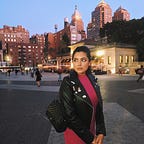Not all Female-Headed Households are created equal
The term Female-Headed Household (FHH) is a bit of a misnomer in Pakistan, where I come from. In the Federally Administered Tribal Areas (FATA) and Khyber Paktunkhwa (KP), the provincial government tends to dismiss talks of female-headed households among the Internally Displaced population by simply saying “This is the North — There are no female headed households here.” And they wouldn’t be completely inaccurate in their claims.
Despite FHHs making up 14 per cent of all households among FATA returnees, they are only classified as such by the United Nations and international NGOs active in the areas of return. For all other stakeholders, they are simply second and third wives, or widows. Would a female-headed household by any other name be as vulnerable?
The answer is yes, but to varying degrees. While the Government sees fit to classify them as wives, and assumes they are party to all the privilege and protection that comes with their marital status, the reality is that in many cases these second or third wives are victims to the cultural and societal norms of the communities they are a part of. More vulnerable still are the widows among them.
I had the opportunity to interview some recently returned female heads of households in Bara, Khyber Agency, in September 2015. At that time, FHHs made up 6 per cent of returnees. The objective of the interviews was to determine whether these female-headed households faced barriers to accessing the return and rehabilitation grant being disbursed by the FATA Disaster Management Authority (FDMA) to recent returnees. The method of delivery was via ATM cards, and mobile transfers to specific SIM cards; 300,000 of which had been distributed to returnees passing through UNHCR embarkation points en-route to their areas of origin.
One of the four women I spoke to, Halima*, was a recently returned mother of five, whose husband was overseas in the Middle East. She was the second of two wives, while UNHCR registration policies only allowed for the registration of one spouse per male. She had thus been registered as the head of her household, and been provided by an ATM and SIM card registered to her National Identity Card (NIC). She had two sons, and the eldest of her sons was 19, and the younger 15. The elder son was married, and was thus the head of his own household, but was still registered under his mother as a dependent.
When I asked Halima if she had any trouble accessing the cash grant, the answer was a quick “No.” At that time, commercial and financial infrastructure in Bara had not been reconstructed, but the closest urban hub — Peshawar — was only 40 minutes away by rickshaw. While there was a border-wall dividing Bara from Peshawar, before sun-down there was relatively free movement on both sides. Her older son would venture to the crowded Karkhanai Bazaar in the heart of the city, and fetch both money and groceries as needed. Halima was quick to say that she would never venture out into the market herself — it was simply too unfamiliar and it simply wasn’t done for a woman to be surrounded by so many na mehrum men (those unrelated by blood). And so, she sent her son.
A few houses away, I spoke with Gulrakhsa bibi*. Gulrakhsa was a widow, with two small boys and a daughter “of marriageable age.” She had no stable livelihood source and had spent most of her grant in repairing the roof of her house, which had caved in from a combination of exposure to extreme weather and military shelling. She had not known the extent of damage to her dwelling until she returned to Bara after being away for 5 years. Her main concern? Finding enough money to marry her daughter off, in the hopes that her future son-in-law could help provide for her family. She had no adult male children who could venture to the marketplace for her to fetch the remainder of her money, or items of daily need. The first installment of her grant had been fetched for her by her sister’s husband, who had since moved further South in the hopes of better work opportunities. She didn’t leave her house either, especially since “one of (her) neighbors had been shot in the head for tending to her garden past curfew.” For her, Karkhanai Bazaar might as well have been on the moon — it was just as out of reach, and just as terrifying a prospect to venture to.
A month later, I saw widows lining the sidewalks outside the WFP food distribution hub. I was informed by a WFP worker that their food packages, which were for a duration of 6 months, had elapsed, yet “they don’t understand that we have no more to give.” They had felt compelled to camp outside the distribution hub and ask for more food, simply because they had no other choice, and no other foreseeable way to feed their dependents. Not one among them was a second or third wife to a husband who was still living.
While the international community acknowledges the vulnerability of FHHs, particularly in terms of social and cultural factors that limit their mobility, knowledge and access to services, more programming should account for the fact that not all female-headed households are created equal, nor are all those who are vulnerable equally vulnerable.
*Names have been changed
